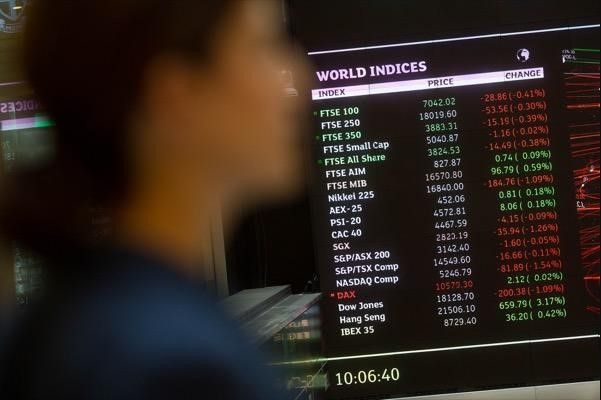FXOpen

The FTSE 100 index, a prominent benchmark of the UK stock market, has witnessed a remarkable turnaround in recent days. After a month-long decline that saw the index drop from 7,700 points on July 31 to as low as 7,262 points by mid-August, a sudden shift has propelled it to its highest point in five days, exceeding 7,503 points. This article employs technical analysis to dissect the factors contributing to this rebound and highlights the potential impact of Marks & Spencer's resurgence on the FTSE 100's performance.
Technical Analysis of the Rebound
The FTSE 100's recent rebound can be attributed to a confluence of technical factors. Firstly, the index had reached a critical support level around 7,262 points, which had historically acted as a floor, causing buying interest to surge. Additionally, the Relative Strength Index (RSI) had dipped into oversold territory during the decline, indicating a potential reversal. This oversold condition signified that selling pressure had become excessive, possibly setting the stage for a rebound.
The rebound's timing coincides with the start of the trading week, a period when market participants often reevaluate their positions after the weekend. This, combined with the oversold conditions and support levels, likely contributed to the swift upward movement.
Marks & Spencer Making A FTSE Comeback?
A noteworthy catalyst for the FTSE 100's resurgence is the reinvigoration of Marks & Spencer, a well-known retail department store and supermarket company. Having faced its own challenges with flagging values and revenue struggles, Marks & Spencer's recent performance has been encouraging. The company's underlying pre-tax profits witnessed a notable 21% increase to £476 million in the year leading up to April 1. Moreover, sales experienced a robust 9.6% growth, amounting to nearly £12 billion.
Marks & Spencer's potential re-admission to the FTSE 100 index carries significance beyond its individual performance. The index comprises a diverse range of traditional bricks-and-mortar businesses, including retail giants, construction and engineering firms, financial institutions, and leisure companies. A rejuvenated Marks & Spencer could symbolise a broader resurgence in these sectors, potentially bolstering the index's overall performance.
Implications for the FTSE 100
While the recent rebound is a positive signal following a month of declining values, it's important to temper expectations. The aspiration for an 8,000-point valuation might remain a distant goal, especially given the complexities of the current economic landscape. The sensationalist anticipation of breaking the 7,000-point barrier, which commanded headlines two years ago, has now settled into history, with the mid-7,000s becoming a standard range.
The FTSE 100's ascent this week marks a potential turning point after a downward trend. It signifies that the market sentiment has shifted, and there's renewed investor confidence. Furthermore, Marks & Spencer's performance underscores that the company's value proposition extends beyond its conventional image of floral jumpers and beige wallpaper. The company's ability to adapt and thrive in the evolving retail landscape is resonating positively with investors.
Conclusion
The FTSE 100's recent rebound, fueled by technical factors and ignited by Marks & Spencer's promising performance, is a significant development for the UK stock market.
While the index might not be poised for an immediate surge to the 8,000-point mark, the renewed momentum is indicative of investor optimism after a month of declines. Marks & Spencer's potential re-entry into the FTSE 100 index signifies the broader implications of traditional businesses adapting to changing market dynamics.
Trade global index CFDs with zero commission and tight spreads. Open your FXOpen account now or learn more about trading index CFDs with FXOpen.
This article represents the opinion of the Companies operating under the FXOpen brand only. It is not to be construed as an offer, solicitation, or recommendation with respect to products and services provided by the Companies operating under the FXOpen brand, nor is it to be considered financial advice.
Stay ahead of the market!
Subscribe now to our mailing list and receive the latest market news and insights delivered directly to your inbox.








